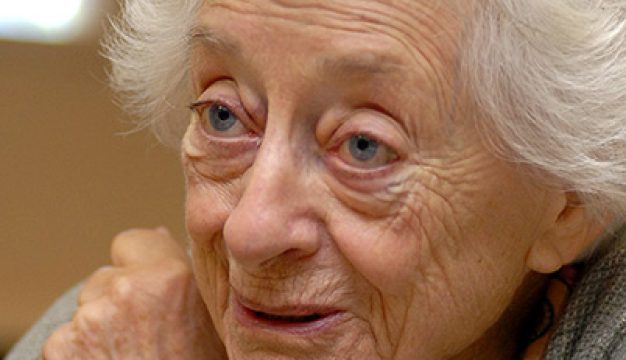Prentice Herman "P. H." Polk
 Prentice "P. H." Polk
Prentice Herman "P. H." Polk (1898-1984) was the official photographer for Tuskegee University from 1939 until his death. During his career, he established himself as one of the top African American photographers of his generation. His work is still lauded for its technical flare and artistry, leading the online culture magazine Flavorwire to refer to Polk as one of its "10 Essential African-American Photographers" in 2014.
Prentice "P. H." Polk
Prentice Herman "P. H." Polk (1898-1984) was the official photographer for Tuskegee University from 1939 until his death. During his career, he established himself as one of the top African American photographers of his generation. His work is still lauded for its technical flare and artistry, leading the online culture magazine Flavorwire to refer to Polk as one of its "10 Essential African-American Photographers" in 2014.
Polk was born November 25, 1898, in Bessemer, Jefferson County, the youngest of four children to miner Jacob Prentice Polk and his seamstress wife Christine Romelia Ward, who were determined that he would get a good education. At the age of 13, he attended the Tuggle Institute in Birmingham, Jefferson County, where he was introduced to art and music. In 1916, he enrolled in evening classes at what was then the Tuskegee Normal and Industrial Institute (present-day Tuskegee University) in Tuskegee, Macon County. He registered for the draft just before World War I ended and registered during World War II but was in his early 40s at the time.
 Tuskegee Institute Marching Band
Intending to study art, Polk found that the Institute offered no such classes, and it was suggested that he take courses in house painting, given the school's focus on industrial education. Rejecting that idea, Polk instead enrolled in the newly created photography program, which was led by his future mentor Cornelius Battey. He left Tuskegee in 1920 to work in a Mobile County shipyard while continuing to study photography via correspondence courses. He later moved to Chicago, Illinois, where he worked at the Pullman Palace Car Company and for a local telephone company while still finding time to apprentice with a white photographer, Fred A. Jensen.
Tuskegee Institute Marching Band
Intending to study art, Polk found that the Institute offered no such classes, and it was suggested that he take courses in house painting, given the school's focus on industrial education. Rejecting that idea, Polk instead enrolled in the newly created photography program, which was led by his future mentor Cornelius Battey. He left Tuskegee in 1920 to work in a Mobile County shipyard while continuing to study photography via correspondence courses. He later moved to Chicago, Illinois, where he worked at the Pullman Palace Car Company and for a local telephone company while still finding time to apprentice with a white photographer, Fred A. Jensen.
In January 1926, Polk married Margaret Blanche Thompson of Brunswick, Georgia. Within the year, he and his young family moved back to Tuskegee and opened his own studio, which he maintained for the rest of his life. The couple would eventually have three daughters and six sons. He joined the Tuskegee faculty in 1927 as an assistant to Leonard Hyman, who had succeeded Battey as head of the of the photography division. Polk would replace Hyman in 1933 as head of the division.
Polk left Tuskegee for a short while in 1938 to open a studio in Atlanta, Georgia. During this time, he won three awards at the Southeastern Photographer's Convention. He later returned to Tuskegee in 1939 as the official campus photographer. He would spend more than four decades in this role, capturing some of the most iconic images ever taken at Tuskegee.
 Eleanor Roosevelt and Charles Anderson
Early in his career, Polk began using an Eastman Kodak box camera, known as the "Brownie," with a Graflex single lens. He used this camera to shoot such iconic photographs as First Lady Eleanor Roosevelt with pilot and future Tuskegee Airmen instructor Charles A. "Chief" Anderson, a photo that helped bring national attention to African American aviation at Tuskegee, and many of George Washington Carver in his laboratory. His 1932 image entitled "The Boss" shows a woman farm worker in her everyday clothes whom he discovered setting up a produce stand near campus. Polk was intrigued by her confident and almost defiant demeanor. He noted that the pose, at an angle, and her authoritative and firm expression, were not the result of his efforts to encourage a response or pose.
Eleanor Roosevelt and Charles Anderson
Early in his career, Polk began using an Eastman Kodak box camera, known as the "Brownie," with a Graflex single lens. He used this camera to shoot such iconic photographs as First Lady Eleanor Roosevelt with pilot and future Tuskegee Airmen instructor Charles A. "Chief" Anderson, a photo that helped bring national attention to African American aviation at Tuskegee, and many of George Washington Carver in his laboratory. His 1932 image entitled "The Boss" shows a woman farm worker in her everyday clothes whom he discovered setting up a produce stand near campus. Polk was intrigued by her confident and almost defiant demeanor. He noted that the pose, at an angle, and her authoritative and firm expression, were not the result of his efforts to encourage a response or pose.
 Tuskegee Civic Association and Jackie Robinson
Polk would go on to make portraits of nearly all the faculty, staff, and administrators at Tuskegee, as well as their families, in addition to innumerable visitors to the campus. In his studio, he would pose men and women in special attire, highlighting the wealth and prestige of those within the community. It is his "Old Characters" series (ca. 1930s through early 1950s), however, that captures the imagination. These simple and unpretentious photographs of laborers and field hands emphasize his keen eye for the artistic side of his vocation. Later, during the civil rights movement, he photographed visiting movement leaders, including Martin Luther King Jr. , Coretta Scott King, Ralph David Abernathy, and Malcom X. He also chronicled campus protests, the Tuskegee Boycott to protest the city's gerrymandered boundaries, and the Selma to Montgomery march.
Tuskegee Civic Association and Jackie Robinson
Polk would go on to make portraits of nearly all the faculty, staff, and administrators at Tuskegee, as well as their families, in addition to innumerable visitors to the campus. In his studio, he would pose men and women in special attire, highlighting the wealth and prestige of those within the community. It is his "Old Characters" series (ca. 1930s through early 1950s), however, that captures the imagination. These simple and unpretentious photographs of laborers and field hands emphasize his keen eye for the artistic side of his vocation. Later, during the civil rights movement, he photographed visiting movement leaders, including Martin Luther King Jr. , Coretta Scott King, Ralph David Abernathy, and Malcom X. He also chronicled campus protests, the Tuskegee Boycott to protest the city's gerrymandered boundaries, and the Selma to Montgomery march.
Shooting in black and white, Polk was a master of light and shade. Some of his most intriguing images emphasize his knowledge of "Rembrandt lighting," named for the famed Dutch painter whose portraits are noted for contrast between light and dark. It is a difficult photographic technique requiring a light source and reflector to create an image that is well lit against a black background. Photos in this style feature his wife Blanche, George Washington Carver, and a Pullman porter. Regarding his photography, he described his best work as "accidents" that resulted from his struggle to get the right shot, in the right focus.
 George Moore Portrait
Polk received numerous awards and acknowledgements. A selection of his photographs was exhibited at the American Museum of Natural History and the Studio Museum of Harlem in New York and the Washington Gallery of Photography in Washington, D.C. Some of Polk's photographs traveled in an exhibition that were shown in the then-Soviet Union and Nigeria. In 1981, he was awarded a fellowship from the National Endowment for the Arts and had an exhibition at the Corcoran Gallery of Art in Washington D.C. The Birmingham Museum of Art also hosted a solo exhibition of his work in 1983.
George Moore Portrait
Polk received numerous awards and acknowledgements. A selection of his photographs was exhibited at the American Museum of Natural History and the Studio Museum of Harlem in New York and the Washington Gallery of Photography in Washington, D.C. Some of Polk's photographs traveled in an exhibition that were shown in the then-Soviet Union and Nigeria. In 1981, he was awarded a fellowship from the National Endowment for the Arts and had an exhibition at the Corcoran Gallery of Art in Washington D.C. The Birmingham Museum of Art also hosted a solo exhibition of his work in 1983.
P.H. Polk documented African American life in a way that few others have been able to emulate in a location that he loved and knew intimately. Over his career, he aimed to provide a realistic view of people and places in a medium that was both dramatic yet highly artistic. He died in Tallassee on December 29, 1984, and was buried at the Tuskegee University Campus Cemetery. The Polk family donated some 3,800 of his images, with all copyrights, to Tuskegee in 2018, many of which have been digitized by Tuskegee University Archives.



